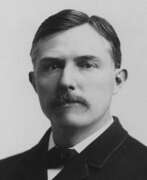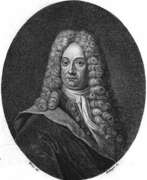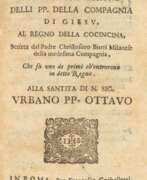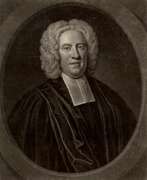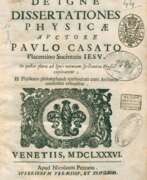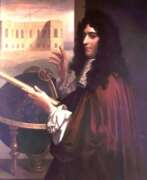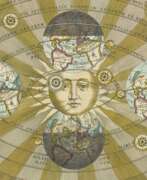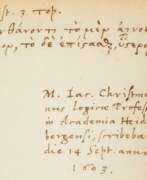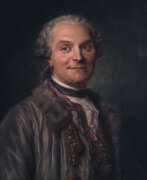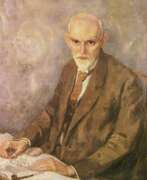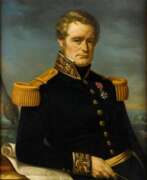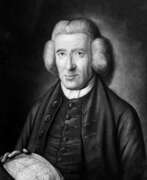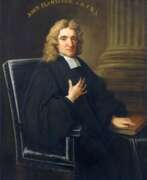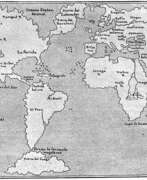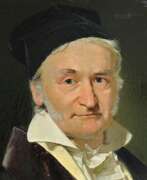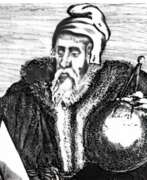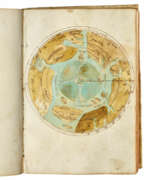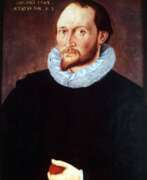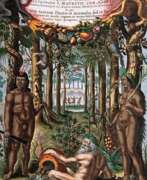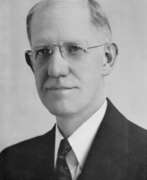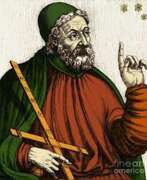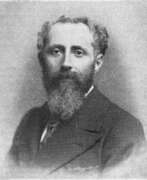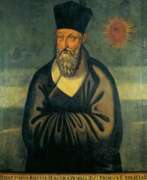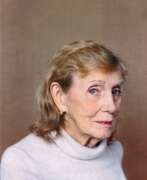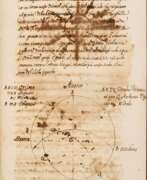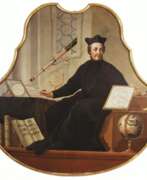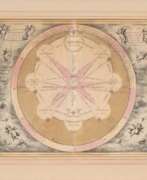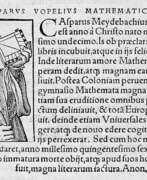Astronomers
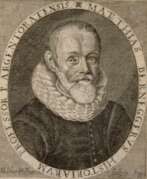

Matthias Bernegger (latin: Bernegerus or Matthew) was an Austrian and French scientist, astronomer, mathematician, linguist and translator.
He was educated in Strasbourg, where he developed a special interest in astronomy and mathematics. Bernegger corresponded with the famous scientists Johannes Kepler and Wilhelm Schickard. From 1607, Bernegger taught at the Strasbourg Gymnasium, and in 1616 he was appointed professor at the Academy.
Bernegger is known for his translations of Justinian and Tacitus, and in 1612 translated into Latin Galileo's 1606 work on the proportional compass, adding considerably to it. These additional detailed annotations by Bernegger made Galileo's compass much easier to use, making it the first mechanical calculating device that could be applied to a wide variety of complex problems. In 1619 Bernegger prepared a three-volume manual of mathematics, and in 1635 he translated Galileo's Dialogue on the Two Mass Systems of the World.
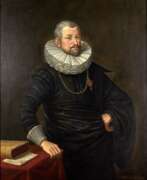

Johann Hartmann Beyer was a German physician, mathematician and statesman.
He earned a master's degree in liberal arts at the University of Strasbourg, and then graduated from the University of Tübingen with a doctorate in medicine. In 1588 Beyer returned to his native Frankfurt and began working as a physician; a year later he was appointed Physicus ordinarius - his duties included overseeing the city's health care and pharmacy system.
In 1614 Beyer took up the position of senior burgomaster of Frankfurt, but during the Fetmilch Rebellion he became involved in conflict, was forced to resign and returned to science.
He had the richest library of scientific books, numbering about 2500 volumes, wrote scientific works on astronomy and mathematics, engaged in medical activity, having invented the famous Frankfurt pills. Beyer carried on a lively correspondence with scientists, including mathematician Johannes Kepler, dealing with decimal fractions. Beyer bequeathed his rich inheritance to the city and to charity.
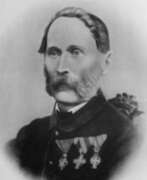

Joseph Georg Böhm was an Austrian astronomer, astrophysicist, cartographer, mathematician, and educator.
At the University of Prague, Böhm attended lectures in mathematics, physics, astronomy, and, after receiving his doctorate, became an assistant at the Vienna Observatory under Joseph Johann von Littrow. He then worked at the observatory at Othen and taught mathematics at the University of Salzburg. In 1839 he was appointed professor of mathematics and practical geometry at the University of Innsbruck, and in 1848 he was elected its rector. In 1852 Böhm was appointed director of the Prague Observatory and professor of theoretical and practical astronomy at the University of Prague.
Georg Böhm published several significant astronomical papers on solar observation. He is the creator of several instruments for astronomical measurements and observations, and he designed the Uranoscope and Universal Gnomon for amateur astronomical observations for the general public. As a member of the commission for the repair of the Prague Astronomical Clock, which he joined in 1865, he wrote a detailed description of it in the work Beschreibung der alterthümlichen Prager Rathausuhr. In addition to astronomy and its popularization, he was also involved in agriculture, economics, and geodesy. One of his important works is Ballistic Experiments (1865).
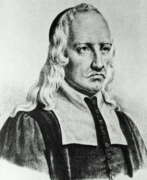

Giovanni Alfonso Borelli was an Italian universalist scientist of the 17th century Scientific Revolution, the founder of biomechanics.
He studied mathematics under Benedetto Castelli (1577-1644) in Rome. In the 1640s Borelli was appointed to the chair of mathematics at the University of Messina and at Pisa in 1656. After 12 years at Pisa and numerous disputes with colleagues, Borelli left the university. In 1667 Borelli returned to the University of Messina, where he engaged in literary and historical studies, studied the eruption of the volcano Etna, and continued to work on the problem of muscular movement of animals and other bodily functions according to the laws of statics and dynamics. In 1674 he was accused of participating in a conspiracy to liberate Sicily from Spain and fled to Rome.
Borelli is known primarily for his attempts to explain muscular movement and other bodily functions according to the laws of statics and dynamics. His best-known work is De Motu Animalium (1680-81; "On the Motion of Animals"). Borelli calculated the forces required for balance in the various joints of the human body, long before Newton published his Laws of Motion. Borelli was the first to realize that musculoskeletal levers increase motion, not force, so muscles must produce much greater forces than those that resist motion. He was also one of the first microscopists: he made microscopic studies of blood circulation, nematodes, textile fibers, and spider eggs. Borelli also authored works on physics, medicine, astronomy, geology, mathematics, and mechanics.
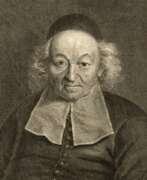

Ismaël Boulliau (Boulliaud), also known as Ismael Bullialdus, was a French astronomer and mathematician who followed the teachings of Copernicus.
Boulliau worked as a librarian for many years and had the opportunity to study the scientific works of Copernicus, Galileo, and Kepler, and as a result became a strong supporter of the heliocentric system of the world. Boulliau was also intimately acquainted with Huygens, Gassendi, Pascal and other prominent scientists of the time, and he translated many works from Greek into Latin.
Boulliau's main astronomical work, published in 1645, was Astronomia philolaica (Astronomy of Philolaus, named after the ancient Greek Pythagorean philosopher Philolaus, who promoted the idea of the motion of the Earth). In it, he supported Kepler's first law that the planets move on ellipses, and provided new evidence for this. Isaac Newton, in Book III of The Mathematical Beginnings of Natural Philosophy, relies on measurements of the magnitudes of planetary orbits determined from observations by Kepler and Boulliau.
Boulliau was also interested in history, theology, classical studies, and philology. He was active in the Republic of Letters, an intellectual community whose members exchanged ideas.
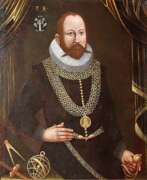

Tycho Brahe, born Tyge Ottesen Brahe, more commonly called Tycho, was a prominent Danish astronomer, astrologer, and alchemist of the Renaissance.
As a young man he traveled extensively throughout Europe, studying in Wittenberg, Rostock, Basel, and Augsburg and acquiring mathematical and astronomical instruments. In 1572 Tycho unexpectedly even for himself discovered a new star in Cassiopeia, and the publication of this turned the young Dane into an astronomer of European reputation. For further astronomical research he established an observatory and gathered around him modern progressive scientists.
Besides practicing astronomy, Tycho was an artist, scientist, and craftsman, and everything he undertook or surrounded himself with had to be innovative and beautiful. He even founded a printing house to produce and bind his manuscripts in his own way, and he perfected sanitary ware for convenience. His development of astronomical instruments and his work in measuring and fixing the positions of the stars laid a solid foundation for future discoveries.
Tycho's observations - the most accurate possible before the invention of the telescope - included a comprehensive study of the solar system and the precise positions of more than 777 fixed stars. What Tycho accomplished using only his simple instruments and intellect remains a remarkable achievement of the Renaissance.
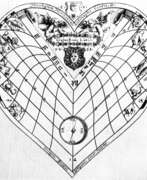

Georg Brentel the Younger was a German draftsman, engraver, and author of works on sundials and instrumentation.
He was the son of the cartographer Hans Brentel (1532-1614) and nephew of the armorial artist Georg Brentel the Elder (1525-1610). He always showed an interest in mathematics and astronomy, writing papers on these subjects and making instruments.
Brentel was particularly fond of designing sundials, and wrote several instructions for assembling various types of sundials - round and cubic, cross-shaped and heart-shaped.
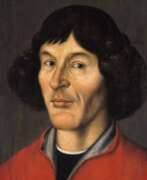

Nicolaus Copernicus (Polish: Mikołaj Kopernik) was a Polish and German scientist, astronomer, mathematician, mechanic, economist, and Renaissance canonist. He was the author of the heliocentric system of the world, which initiated the first scientific revolution.
Copernicus studied the humanities, including astronomy and astrology, at the University of Krakow and at the University of Bologna in Italy. Together with other astronomers, including Domenico Maria de Novara (1454-1504), he was engaged in observing the stars and planets, recording their movements and eclipses. At the time, medicine was closely related to astrology, as the stars were believed to influence the human body, and Copernicus also studied medicine at the University of Padua between 1501 and 1503.
Nicolaus Copernicus, based on his knowledge and observations, was the first to suggest that the Earth is a planet that not only revolves around the sun every year, but also rotates once a day on its axis. This was in the early 16th century when people believed the Earth to be the center of the universe. The scientist also suggested that the Earth's rotation explained the rising and setting of the Sun, the movement of the stars, and that the cycle of the seasons was caused by the Earth's rotation around itself. Finally, he correctly concluded that the Earth's motion in space causes the planets to move backwards across the night sky, the so-called retrograde direction.
Although Copernicus' model was not completely correct, it laid a solid foundation for future scientists, such as Galileo, who developed and improved mankind's understanding of the motion of celestial bodies. Copernicus completed the first manuscript of his book De Revolutionibus Orbium Coelestium (On the Rotation of the Celestial Spheres) in 1532. In it, the astronomer outlined his model of the solar system and the paths of the planets. However, he published the book only in 1543, just two months before his death, and dedicated it to Pope Paul III. Perhaps for this reason, and also because the subject matter was too difficult to understand, but the church did not finally ban the book until 1616.
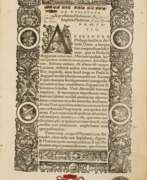

Joao de Souza Freire de Araujo Borges Da Veiga was a Portuguese astronomer and climatologist.
This scientist is one of the authors of the manuscript Dialogo epistolar astronomico sobre o cometa apparecido em Lamego as da Abril e observado aze o dia 9. dao anno de 1766. The second author who signed this manuscript is Joze de Araujo Souza Freire Borges Da Veiga.
It is a Portuguese treatise on the 1766 comet (D/1766 G1 Helfenzrieder), which appeared in April of that year and was discovered on April 1 by Helfenzrieder, and independently by Messier, Cassini de Turi, and others. The treatise gives a detailed account of the observations made by the authors from an observatory located on Mount Queimada near Lamego, Portugal. The authors also provide a chronological catalog of previous observations of comets since 1500 and cite their numerous authors.
The authors of this treatise were the first known climatologists, as well as experienced astronomers in continental Portugal who made meteorological observations.
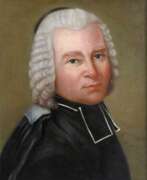

Nicolas-Louis De la Caille was a French astronomer, abbot and educator.
He studied philosophy and theology, became an abbot, but the craving for science overpowered everything, and he studied astronomy on his own. In 1736, la Caille received a place at the Paris Observatory, in 1739 was appointed professor of mathematics at Mazarini-College in Paris and built his own observatory, where he conducted astronomical observations. In 1741 Lacaille was admitted to the Académie des Sciences.
La Caille was an outstanding astronomer: he observed more than 10,000 stars in the Southern Hemisphere and named 14 of the 88 constellations. In 1752, he made an astronomical expedition to the Cape of Good Hope, where he built an observatory and conducted a huge series of observations, including the discovery and cataloging of 42 nebulae. These studies led to la Caille being called "the father of southern astronomy," and his observations from South Africa of the Moon, Venus, and Mars, combined with similar observations already made in the Northern Hemisphere, led to the calculation of more accurate values for the distances to these bodies.
On his return to Paris two years later, in 1754, he resumed his post and taught at the school of Mazarin, continuing his work at the observatory of the College of Mazarini. Among his pupils was the great chemist Antoine Lavoisier. La Caille was a foreign honorary member of the St. Petersburg Academy of Sciences and a member of the Royal Society of London. His Coelum Australe Stelliferum ("Star Catalog of the Southern Sky") was published in 1763.
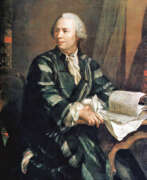

Leonhard Euler was the greatest mathematician of the 18th century and history in general.
Euler brilliantly graduated from the University of Basel and entered the St. Petersburg Academy of Sciences, then began to work at the Berlin Academy, and later to lead it. In 1766, the scientist received an invitation from the Russian Empress Catherine II and again came to St. Petersburg to continue his scientific work.
Here he published about 470 works in a wide variety of fields. One of them is a large-scale work "Mechanics" - an in-depth study of this science, including celestial mechanics. Euler by that time was practically blind, but continued to be actively engaged in science, in the records he was helped by his son Johann Albrecht and stenographers. Leonhard Euler made many fundamental discoveries that brought great benefit to mankind.
His massive contribution to the development of mathematics, mechanics, physics and astronomy cannot be overestimated, and his knowledge in the most diverse branches of science is admirable. During his lifetime, he published more than 850 works that contain in-depth studies of botany, chemistry, medicine, ancient languages, and music. Euler held membership in many academies of science around the world.
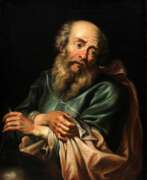

Galileo Galilei was an Italian naturalist, physicist, mechanic, astronomer, philosopher, and mathematician.
Using his own improved telescopes, Galileo Galilei observed the movements of the Moon, Earth's satellites, and the stars, making several breakthrough discoveries in astronomy. He was the first to see craters on the Moon, discovered sunspots and the rings of Saturn, and traced the phases of Venus. Galileo was a consistent and convinced supporter of the teachings of Copernicus and the heliocentric system of the world, for which he was subjected to the trial of the Inquisition.
Galileo is considered the founder of experimental and theoretical physics. He is also one of the founders of the principle of relativity in classical mechanics. Overall, the scientist had such a significant impact on the science of his time that he cannot be overemphasized.
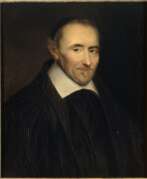

Pierre Gassendi was a French Catholic priest, Epicurean philosopher, mathematician, astronomer and researcher of ancient texts.
He taught rhetoric at Diné and philosophy at Aix-en-Provence. Gassendi's Syntagma philosophicum, the result of his historical research and philosophical reflections, is a well-known work. Several of his works on astronomy, physics and mechanics were also published in the 17th century.
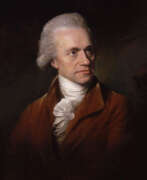

Frederick William Herschel (German: Friedrich Wilhelm Herschel) was a German-born British astronomer and composer. He frequently collaborated with his younger sister and fellow astronomer Caroline Herschel (1750–1848). Born in the Electorate of Hanover, William Herschel followed his father into the military band of Hanover, before emigrating to Great Britain in 1757 at the age of nineteen.
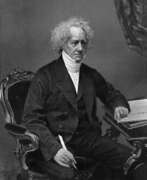

Sir John Frederick William Herschel, 1st Baronet was a British astronomer and son of the Uranus discoverer Wilhelm Herschel. He is credited with the first double star and nebula catalogues of the southern starry sky, which he observed during a five-year stay near Cape Town.
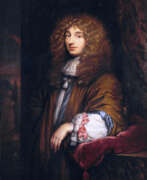

Christiaan Huygens van Zeelhem was a Dutch mechanic, physicist, mathematician, inventor and astronomer who formulated the wave theory of light.
An admirer of Descartes, Huygens preferred to conduct new experiments himself to observe and formulate laws. In physics, he contributed to the development of the crucial Huygens-Fresnel principle, which applies to wave propagation. He also extensively investigated free fall. He experimentally proved the law of conservation of momentum. He derived the law of centrifugal force for uniform circular motion.
He also invented the pendulum clock, discovered centrifugal force and the true shape of Saturn's rings as well as its moon Titan. Huygens is considered the first theoretical physicist to use formulas in physics and one of the founders of theoretical mechanics and probability theory.


Johannes Kepler was a German mathematician and astronomer who discovered that the Earth and planets move around the Sun in elliptical orbits.
Kepler created the three fundamental laws of planetary motion. He also did seminal work in optics and geometry, calculated the most accurate astronomical tables, and made many inventions and discoveries in physics on which further scientific discoveries by advanced scientists were based.
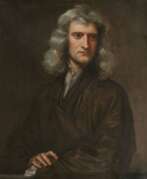

Isaac Newton was an English mathematician, physicist, astronomer, alchemist, theologian, and author (described in his time as a "natural philosopher"), widely recognised as one of the greatest mathematicians and physicists and among the most influential scientists of all time. He was a key figure in the philosophical revolution known as the Enlightenment. His book Philosophiæ Naturalis Principia Mathematica (Mathematical Principles of Natural Philosophy), first published in 1687, established classical mechanics. Newton also made seminal contributions to optics, and shares credit with German mathematician Gottfried Wilhelm Leibniz for developing infinitesimal calculus.
In the Principia, Newton formulated the laws of motion and universal gravitation that formed the dominant scientific viewpoint until it was superseded by the theory of relativity. Newton used his mathematical description of gravity to derive Kepler's laws of planetary motion, account for tides, the trajectories of comets, the precession of the equinoxes and other phenomena, eradicating doubt about the Solar System's heliocentricity. He demonstrated that the motion of objects on Earth and celestial bodies could be accounted for by the same principles. Newton's inference that the Earth is an oblate spheroid was later confirmed by the geodetic measurements of Maupertuis, La Condamine, and others, convincing most European scientists of the superiority of Newtonian mechanics over earlier systems.
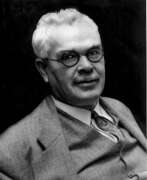

Francis Gladheim Pease was an American astronomer and optical instrument maker.
Pease graduated from the Armor Institute of Technology in Chicago, worked as an optician and observer at Yerkes Observatory, and from 1904 also made optical instruments at Mount Wilson Observatory, where he worked for 34 years. Pease designed a 100-inch telescope as well as a 50-foot interferometric telescope, with which he made direct measurements of the diameters of stars. He also participated in the development of the Hale telescope.
In 1928 he found the first planetary nebula in a globular cluster (M15), now cataloged as Pease. Francis Gladheim Pease also took very high quality photographs of the surface of the Moon, and a crater on this Earth satellite is named in his honor.
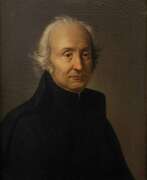

Giuseppe Piazzi was an Italian astronomer, mathematician and priest.
Around 1764 Piazzi became a Theatine priest, in 1779 he was appointed professor of theology in Rome, and in 1780 - professor of higher mathematics at the Academy of Palermo. Later, with the assistance of the Viceroy of Sicily, he founded an observatory in Palermo. There he compiled his great catalog of the positions of 7,646 stars and showed that most stars move relative to the Sun. There, on January 1, 1801, Piazzi also discovered the asteroid Ceres.
Giuseppe Piazzi's merits were appreciated: he was a member of the Royal Society of London, a foreign honorary member of the St. Petersburg Academy of Sciences and a foreign member of the Paris Academy of Sciences. A crater on the Moon is named in his honor.
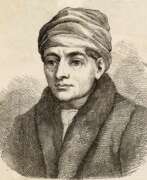

Regiomontanus, real name Johannes Müller, was a 15th-century German astronomer and mathematician, one of the first printers.
The son of a miller, he entered the University of Leipzig at the age of 11 and later transferred to the University of Vienna. In 1452, Regiomontanus earned a bachelor's degree and then a master's degree. With his teacher, the mathematical astronomer Georg von Peyerbach (d. 1461), he spent the next years practicing astronomy and astrology, including observations of eclipses and comets, making astronomical instruments, and compiling horoscopes for the court of Holy Roman Emperor Frederick III.
Regiomontanus was also seriously involved in mathematics, publishing his major work on trigonometry, On All Kinds of Triangles (1462-1464). From 1467 to 1471, Regiomontanus lived in Hungary as astrologer to Hungarian King Matyas I and Archbishop Janos Vitez. Then in Nuremberg, Germany, he opened an instrument workshop, established a printing house, and continued his planetary observations. The scholar planned to print extensive publications on classical, medieval, and modern mathematical sciences, but not all plans came to fruition.
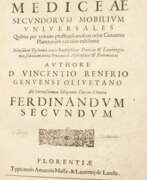

Vincenzo Renieri, born Giovanni Paolo, was an Italian priest, astronomer and mathematician.
Renieri was a member of the Olivetan Order and traveled throughout Italy. In 1633 in Siena, he met the already blind Galileo, who, appreciating his knowledge, instructed him to update his astronomical tables of the motion of the satellites of Jupiter, adding new ones. Rainieri later met the astronomer and scientist Vincenzo Viviani (1622-1703), with whom he worked for many years, continuing Galileo's observations of Jupiter's moons.
Renieri was also professor of mathematics at the University of Pisa and taught Greek there. In 1639 he published his work Tabulae Mediceae secundorum Mobilium Universales in Florence. One of the lunar craters is named after Renieri.
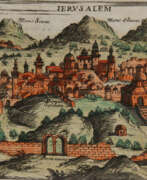

Giuseppe Rosaccio was an Italian physician, astronomer, cosmographer and cartographer.
Rosaccio graduated from the University of Padua, studied philosophy, medicine and law, and worked as a physician and judge. He became famous for a series of works that popularized a number of scientific disciplines. Some of his books deal with astrological medicine, specific diseases and their remedies, and the distillation of medicines from plants.
Giuseppe Rosaccio wrote about forty works on various topics of interest to him, but the main one was geography. He wrote an essay on the Muslim religion and treatises on geography, cosmography, astronomy, and astrology, which became very popular and were repeatedly reprinted.
Rosaccio created many atlases and small-format geographical works. Among his works is Ptolemy's Geography, which contains many indexes and is written in Italian (1599). He also authored a large map of the world (1597), and a large map of Italy and Tuscany (1609). His book Journey from Venice to Constantinople includes maps of the route with brief texts, that is, it is essentially an illustrated version of a pilgrimage to the Holy Land.
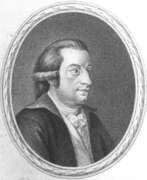

Franz Xaver Freiherr (from 1801) von Zach, Baron (Hungarian: Zách János Ferenc) was an Austro-German astronomer, surveyor, mathematician, science historian and officer of Hungarian origin. He rendered outstanding services in the exploration of the solar system and the organization of international astronomy, after whom a lunar crater (Zach) and an asteroid ((999) Zachia) were named, among others. He was also the founder of the first scientific journals and organised the first astronomical congress in 1798.
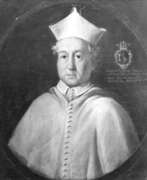

Johann Zahn (German: Johann or Johannes Zahn) was a German scientist and philosopher, optician and astronomer, mathematician and inventor.
Zahn studied mathematics and physics at the University of Würzburg, was professor of mathematics at the University of Würzburg, and served as a canon of the Order of Regular Canon Premonstratensians. His other activities were optics as well as astronomical observations.
In 1686 Johann Zahn invented and designed a portable camera obscura with fixed lenses and an adjustable mirror, which is the prototype of the camera. In his treatise on optics, Oculus Artificialis Teledioptricus (1702), Zahn gives a complete picture of the state of optical science of his time. He begins with basic information about the eye and then moves on to optical instruments. The book is aimed at eighteenth-century microscope and telescope enthusiasts and includes all the necessary details of construction, from lens grinding to drawings.
